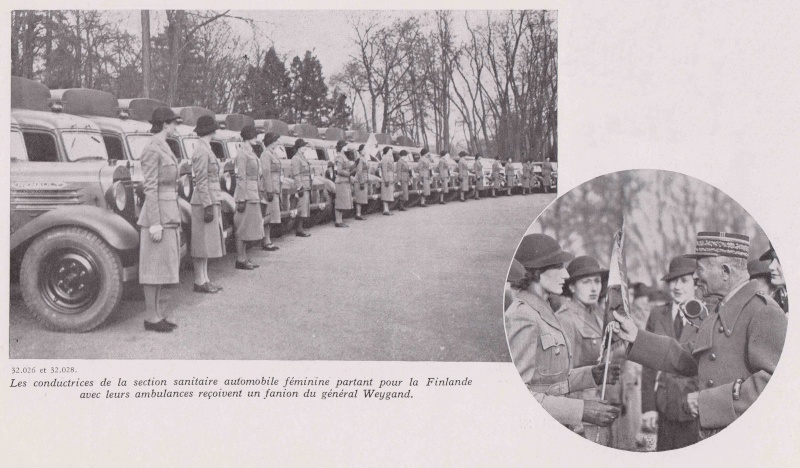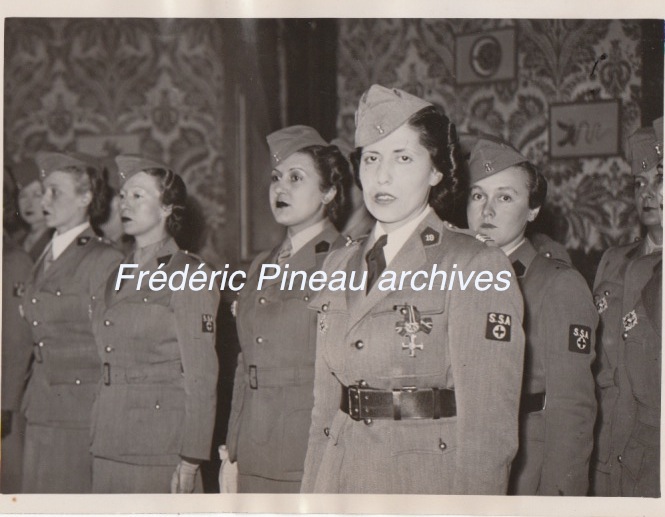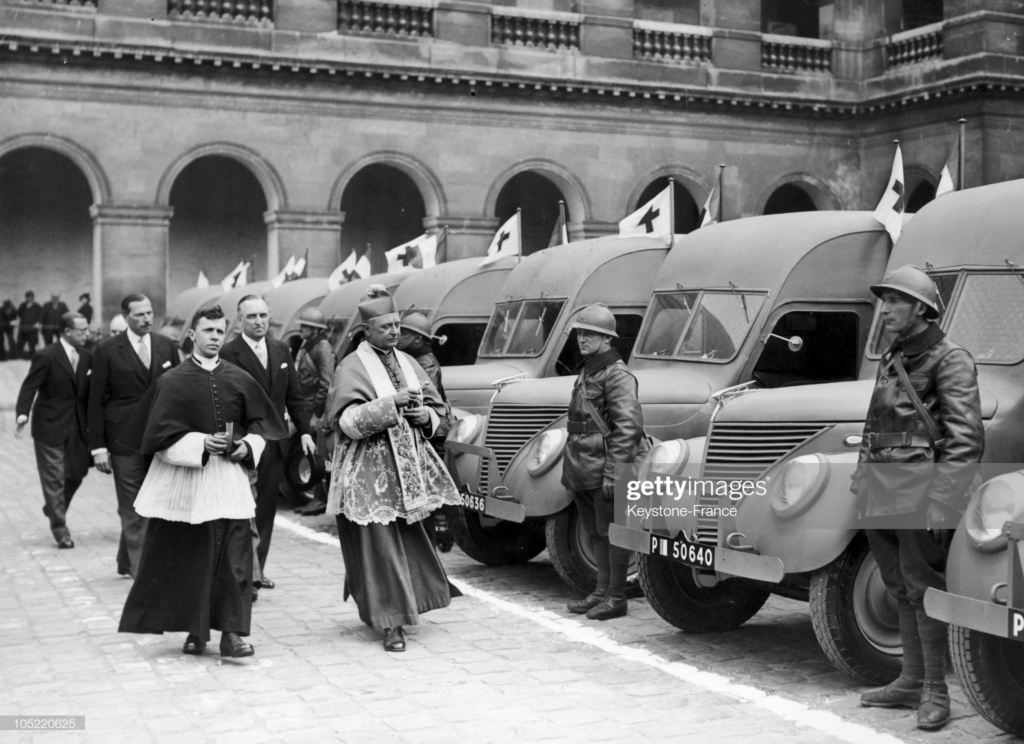Hello to all

; a little more..................
The Women's Sanitary Automobile Sections (SSA) 1940.
The donation.
If during the First World War, many women volunteered for the role of nurses, the enactment of the Boncour law on July 11, 1938, which provides "the voluntary commitment and incorporation of women under the armies", modifies the prospects for action to which they can participate in the declaration of war against Germany in September 1939. Among them, the French Red Cross proposes the evacuation of the wounded from the front. to compensate for the lack of personnel available for the Health Service. "Can't men be replaced by nurses in ambulances? Isn't that their place? However, who has not understood that men soon become weird in the particular circumstances of the war?"
The French Red Cross, constituted at that time by three autonomous associations, each of which has legal personality, can acquire property, collect donations and legacies:
-The Society for the Relief of Wounded Soldiers (SSBM), founded on May 22, 1864 and recognized on the same day as the French National Committee of the Red Cross, became in 1870 the Society for the relief of wounded soldiers of the armies of Earth and Sea;
-The Ladies Association of France (ADF), founded in 1879 by Dr. Duchaussoy;
-The Women's Union of France (UFF), born from the previous one in 1881.
At the end of 1939, the SSBM proposed to the French government "the provision of French army personnel services and the use of automobile equipment, within the framework of donations", whose rules were codified by decree-Law of January 31, 1940 "On the acceptance of gifts made to the State for the needs of the Military Health Service, and in particular Articles 6 and 14".
On February 17, 1940, Hippolyte Ducos signed the decree on "acceptance of donations consisting of personnel services and use of equipment offered to the State by the Charitable Women's Automobile Sections (SSBM), for the needs of the Military Health Service ( ...) These sections are attached to the train depot of Train No. 19. They are made available to the Commander-in-Chief of the Land Forces, or to the General Commanders-in-Chief of the theaters of operations located outside France, or directly of the Ministry of War. "
The director of the Women's Sanitary Automobile Sections, which is located at the SSBM, 19 rue François 1st in Paris 12, is insured by Countess Roussy de Sales, president (as a senior nurse, member of the Central Ladies Council of the SSBM). ), Miss Nicolle, Chief 13, Countess of Tocqueville (Deputy Chief), a six-member team (Baroness H. La Caze, Madame de Peyrimhoff de Fontenelle, Ms. Paul Reynaud, Ms. Colette Schwob [de Lure], Ms. Hélène Terré, Viscount of Villiers de la Noue), staff members (Countess Gaston de La Rochefoucauld, Mrs. Peretti de La Rocca, Mrs. Schreiber-Cremieux) and honorary members (Mrs. Jacques Lebon, Countess of Maublanc, Princess Jerome Murat , Viscount Noailles, Mrs. Trefusis).
The 1st Women's Sanitary Automobile Sections was formed shortly thereafter, on April 16, 1940, in Train No. 19 (Section 5 202/19), to which it was attached. Its composition is defined by the instructions of April 16, 1940. It includes French and foreign personnel subject to donations (a French officer, a section chief, a deputy section chief and thirty-eight female drivers) and personnel provided by the army (a sergeant, a brigadier and three drivers). The former are in charge of the liaison vehicle and the twenty sanitary vehicles of the donation, the latter: the liaison vehicle, the van and the kitchen truck provided by the army.
Sources: Jean-Jacques Monsuez, "Les sections sanitaires automobiles féminines", Revue historique des armées [En ligne], 247 | 2007, mis en ligne le 23 juillet 2008, I consulted 19 juillet 2019. URL:
http://journals.openedition.org/rha/2033
https://www.ebay.it/itm/WWII-M-DE-LILLE ... Sw9idaE2Vb
Cheers. Raúl M

.


